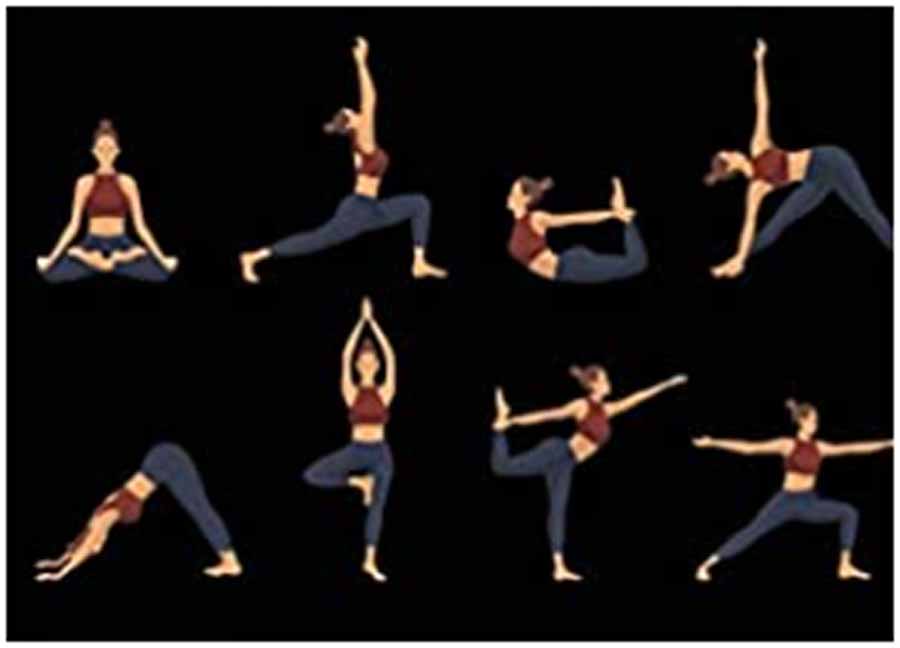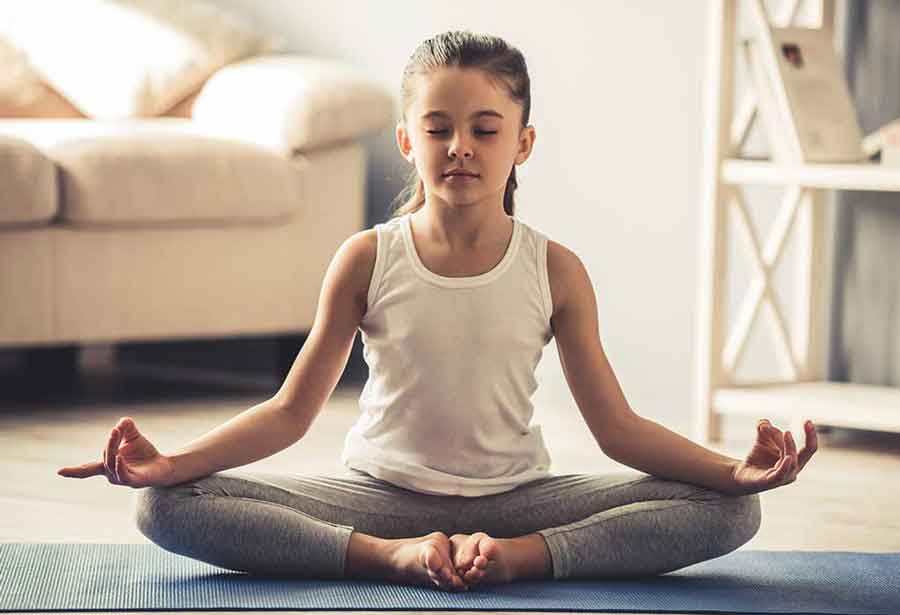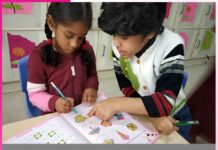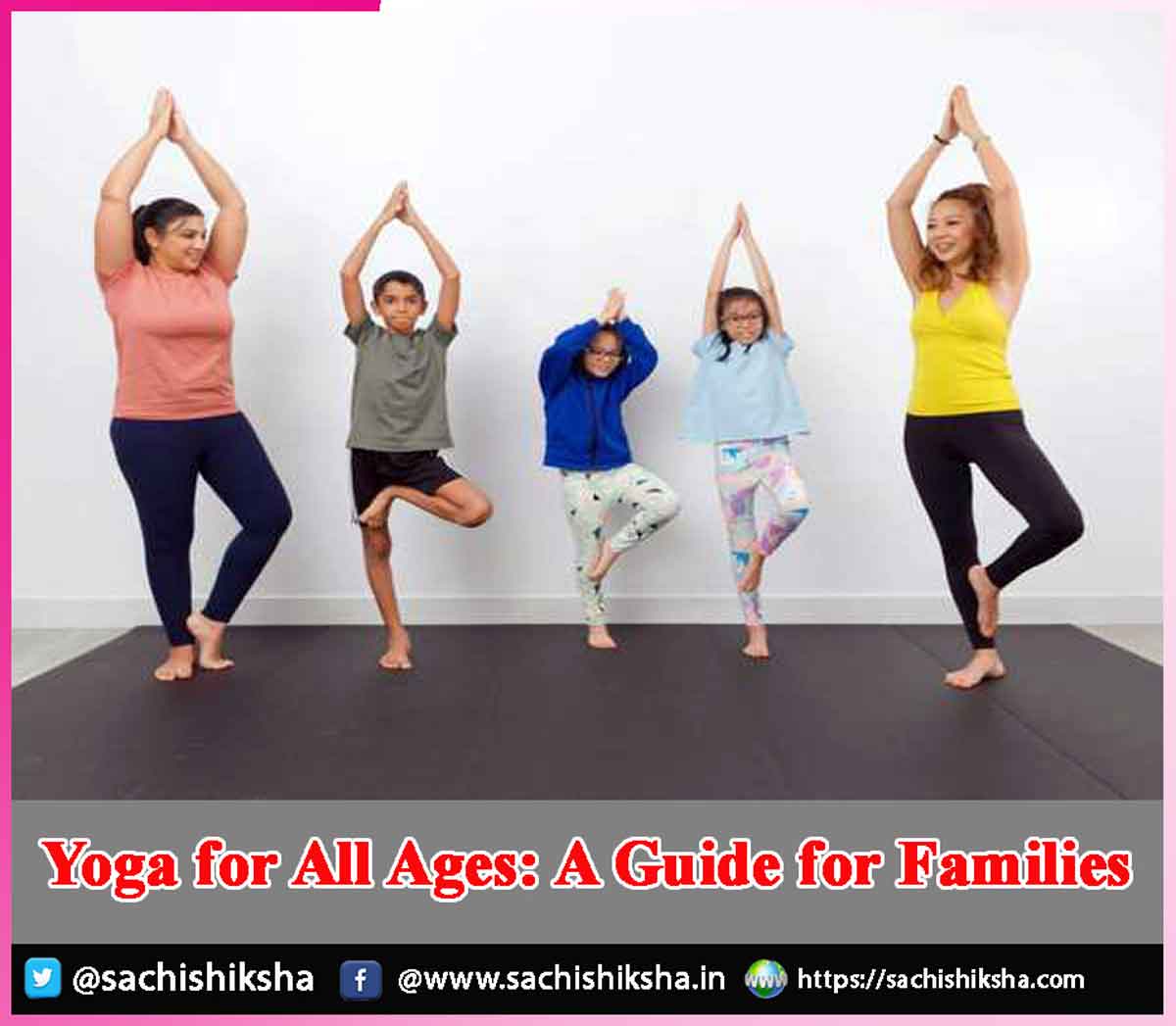Yoga for All Ages: A Guide for Families
Introduction: Yoga, an ancient practice with roots in India, has gained widespread popularity as a holistic way to maintain physical, mental, and emotional well-being. One of the greatest aspects of yoga is its adaptability—people of all ages, from toddlers to seniors, can benefit from its diverse poses and mindfulness techniques. This guide explores how families can incorporate yoga into their lives, fostering health, bonding, and harmony across generations.
Table of Contents
Benefits of Yoga for Families

Physical Benefits
- Improved Flexibility and Strength: Yoga poses help enhance muscle strength and flexibility, which are essential for people of all ages.
- Better Posture: Regular practice encourages better spinal alignment and posture.
- Enhanced Balance and Coordination: Many yoga poses improve balance, which is crucial for young children developing motor skills and older adults looking to prevent falls.
- Increased Energy Levels: Gentle yoga sequences boost blood flow and promote vitality.
Mental and Emotional Benefits
- Stress Relief: Breathing exercises and mindfulness help calm the mind, reducing stress and anxiety.
- Improved Focus: Yoga enhances concentration and cognitive function.
- Emotional Bonding: Practicing yoga as a family fosters stronger emotional connections and communication.
- Mindful Living: Incorporating mindfulness through yoga cultivates a positive and present-focused mindset.
Yoga for Different Age Groups
For Young Children (Ages 3-7)
Yoga for young children focuses on fun, imaginative movements and playful storytelling. Kids at this age benefit from learning basic poses that build motor skills, balance, and creativity.
Suggested Poses
- Cat-Cow (Marjaryasana-Bitilasana): Helps children become aware of their spinal movement.
- Tree Pose (Vrikshasana): Develops balance and focus.
- Butterfly Pose (Baddha Konasana): Encourages hip flexibility.
Tips for Parents
- Incorporate animal sounds and names to make poses engaging.
- Keep sessions short (10-15 minutes) and lighthearted.
- Use yoga storytelling to capture their imagination.
For Tweens and Teenagers (Ages 8-18)

Suggested Poses
- Warrior II (Virabhadrasana II): Builds strength and confidence.
- Chair Pose (Utkatasana): Strengthens the legs and core.
- Seated Forward Bend (Paschimottanasana): Promotes relaxation and flexibility.
Tips for Parents
- Encourage independent practice but participate occasionally to bond.
- Introduce mindfulness and breathing techniques to help with anxiety.
- Provide positive reinforcement for consistent practice.
For Adults (Ages 19-59)
For adults, yoga can be a powerful tool to manage stress, maintain fitness, and improve overall health.
Suggested Poses
- Downward Dog (Adho Mukha Svanasana): Stretches the entire body.
- Bridge Pose (Setu Bandhasana): Strengthens the back and core.
- Cobra Pose (Bhujangasana): Improves posture and spinal flexibility.
Tips for Practicing
- Dedicate 20-30 minutes daily for yoga practice.
- Focus on combining physical poses with mindful breathing.
- Explore different styles such as Hatha, Vinyasa, or Restorative Yoga based on individual needs.
For Seniors (Ages 60 and Above)
Yoga can help seniors maintain mobility, balance, and mental clarity while reducing aches and pains associated with aging.
Suggested Poses
- Mountain Pose (Tadasana): Improves posture and stability.
- Chair Yoga: Modifications of traditional poses done while seated for those with limited mobility.
- Legs-Up-The-Wall Pose (Viparita Karani): Reduces swelling and promotes relaxation.
Tips for Safe Practice
- Use props like blocks and straps for support.
- Focus on gentle and restorative poses.
- Prioritize breathing exercises and meditation.
- Consult a doctor before starting if there are any health concerns.
Creating a Family Yoga Routine
Set a Regular Schedule:
Consistency is key to building a sustainable yoga practice. Choose a time that works for everyone, such as mornings or weekends.
Designate a Yoga Space:
Create a clutter-free space with mats, cushions, and any other necessary props.
Keep It Fun and Inclusive:
- Mix up poses to suit different age groups.
- Include games for children and relaxation techniques for adults.
- Play calming background music to enhance the experience.
Incorporate Breathing Exercises
Simple breathing techniques like belly breathing or alternate nostril breathing can benefit the whole family.
Practice Gratitude and Reflection:
End sessions with a moment of gratitude or sharing reflections to foster positivity and connection.
Tips for Overcoming Challenges
- Time Constraints: Start with short 10-minute sessions and gradually extend the duration.
- Resistance from Family Members: Highlight the benefits and lead by example.
- Different Skill Levels: Modify poses to accommodate all abilities.
- Consistency: Create a family reward system for regular practice.
Yoga Games and Activities for Families
- Pose Relay: Each family member takes turns demonstrating a pose for others to mimic.
- Yoga Storytelling: Create a story where characters perform specific poses.
- Breathing Races: See who can take the longest, slowest breath.
Mindfulness Practices for Families
- Guided Meditation: Use apps or recordings for simple family-friendly sessions.
- Gratitude Circle: Share one thing you are grateful for after each yoga session.
- Mindful Eating: Practice eating slowly and savoring each bite during meals.
Conclusion
Yoga is a beautiful practice that brings families closer while promoting health and well-being for all ages. By integrating yoga into daily routines, families can create lasting memories, reduce stress, and support each other’s growth physically, mentally, and emotionally. Whether it’s playful poses for young children, strength-building exercises for teenagers, or gentle stretches for seniors, yoga truly is for everyone.














































